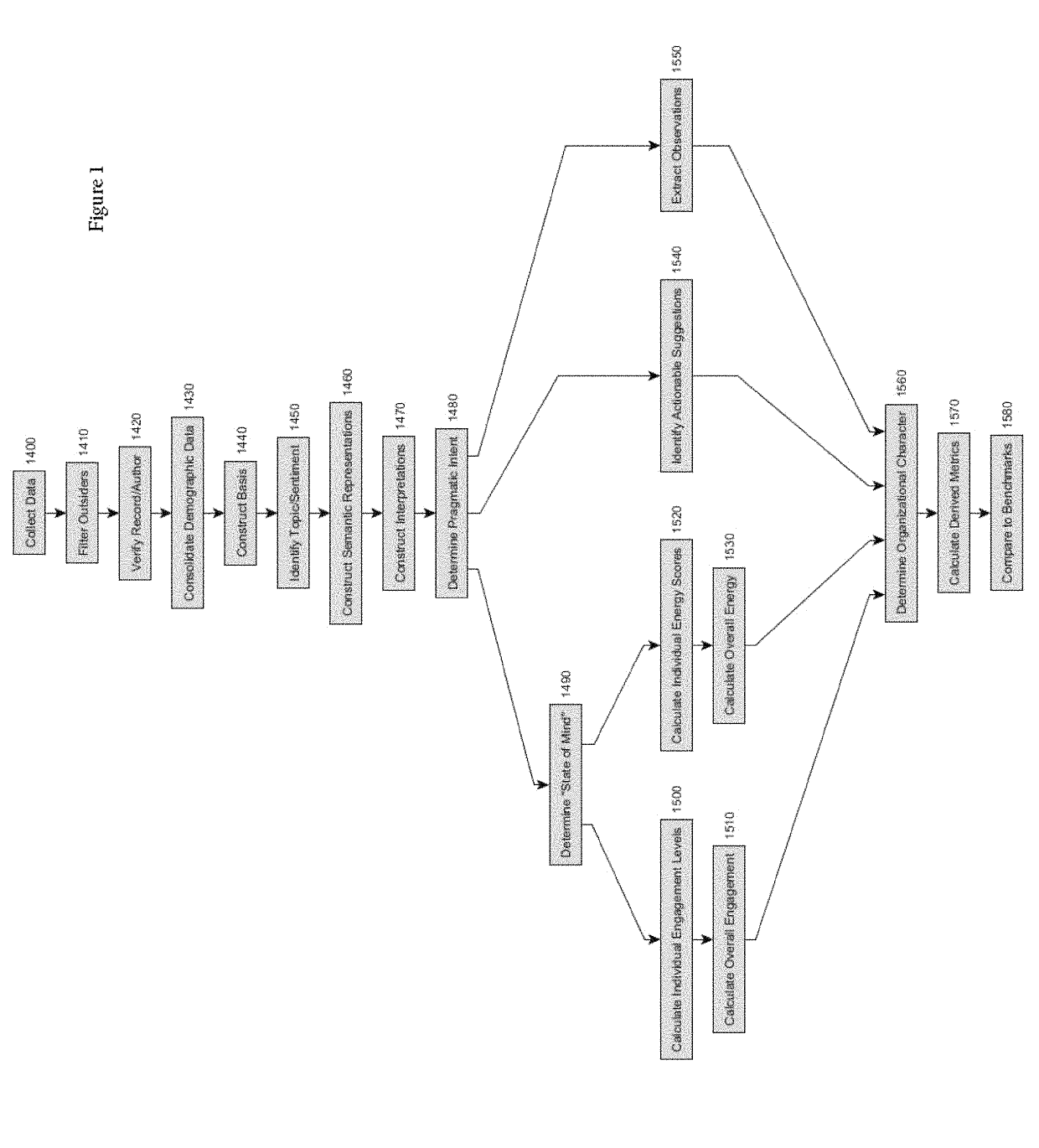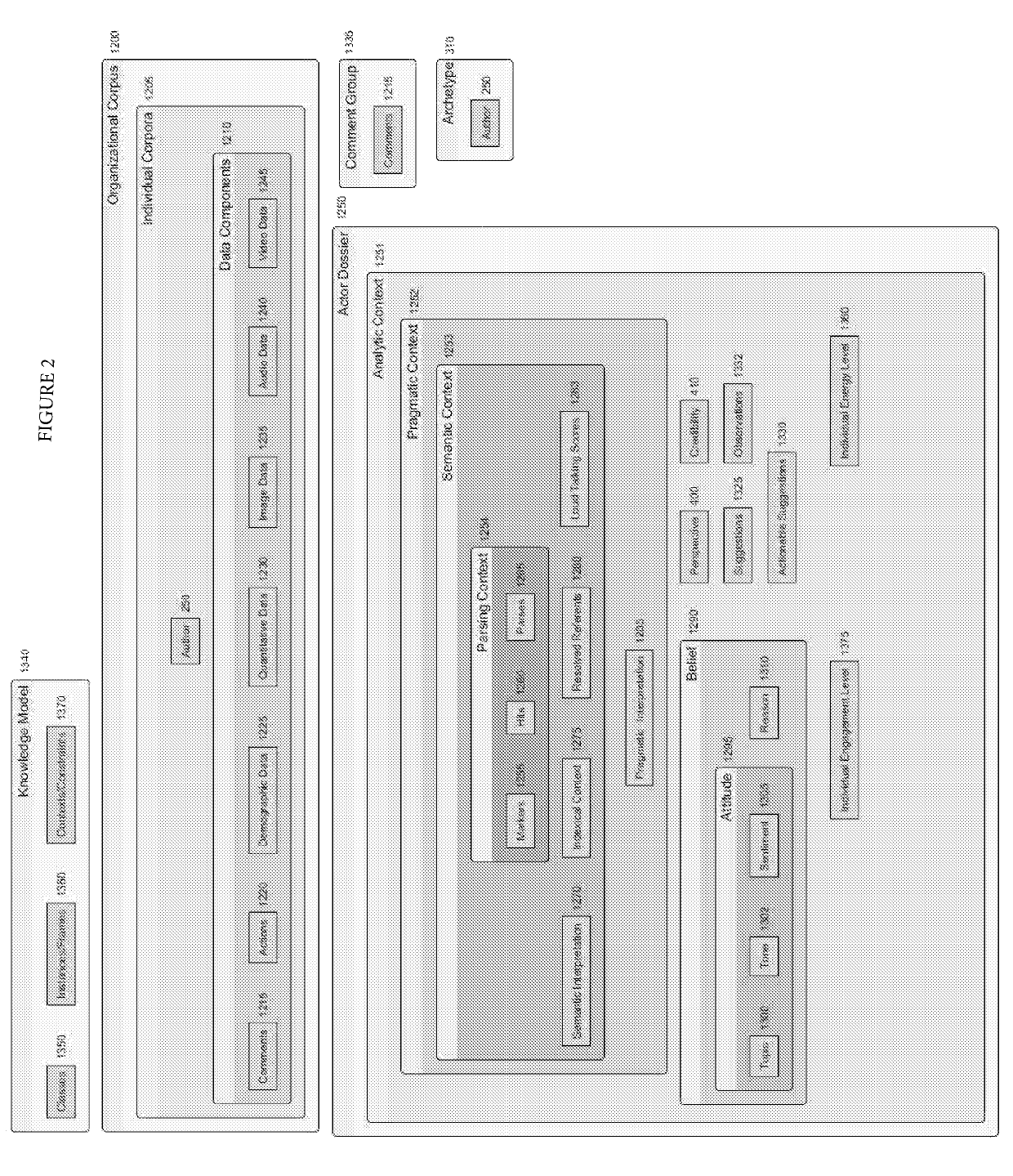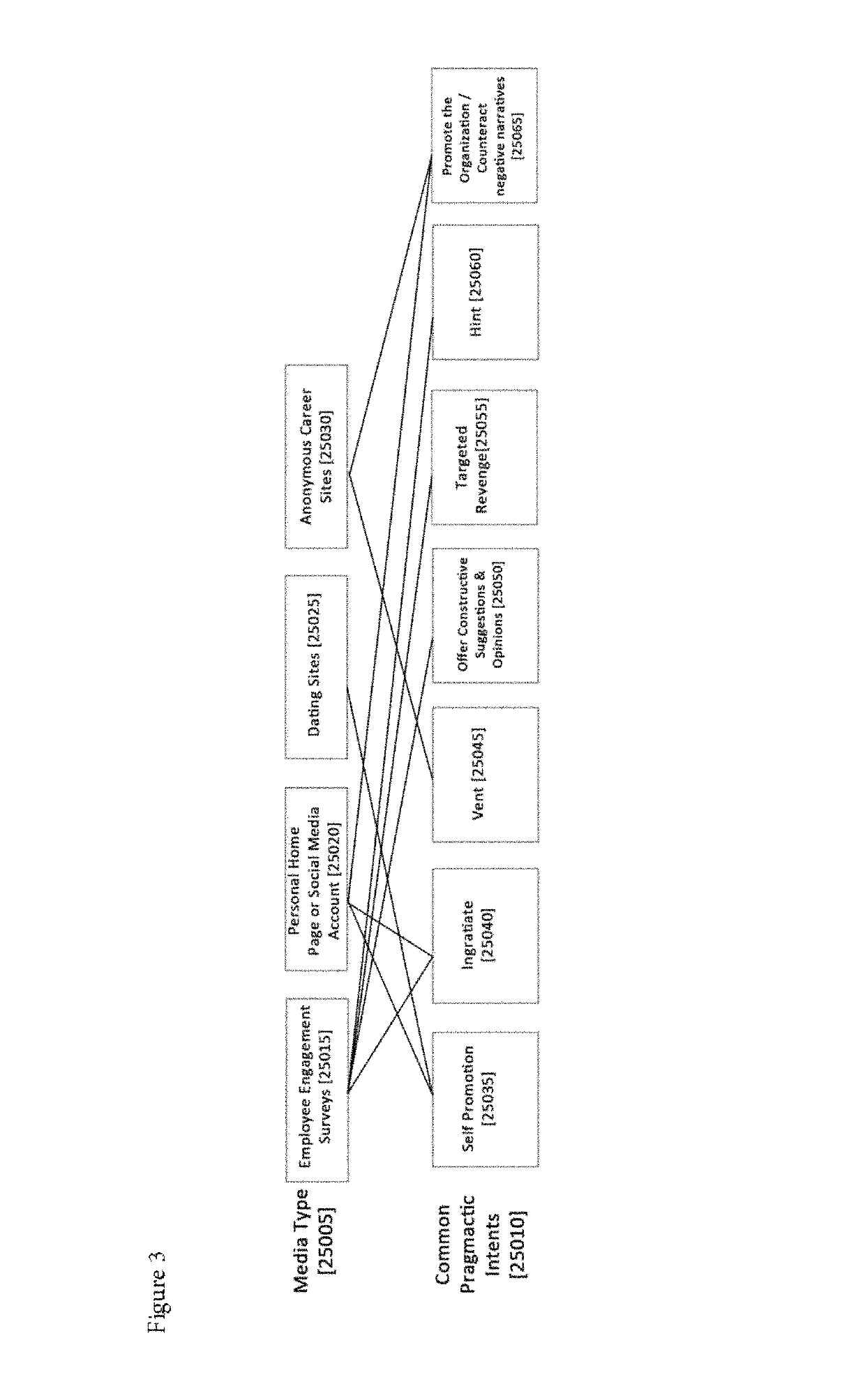Analytical system for assessing certain characteristics of organizations
an analytical system and organizational technology, applied in the field of analytical systems for assessing certain characteristics of organizations, can solve the problems of subordinates being afraid to disagree with or contradict their leaders, organizations are more difficult to accurately assess, and anecdotal evidence about competitors or target investments is available, so as to achieve the effect of boosting the value of data captured
- Summary
- Abstract
- Description
- Claims
- Application Information
AI Technical Summary
Benefits of technology
Problems solved by technology
Method used
Image
Examples
embodiment
[0365]The main embodiment described here takes as a starting point the reference embodiment described in the overall computational framework section. In the embodiments described here, the textblock process will be implemented in three separate modules. The first module constructs textblock classes [21070]—i.e. it implements the first three steps in the process described above. The second module queries for class instance matches[21050], and the third reconstructs textblock instances[21040]. The definition of the reference [21010] and active sets[21020] used in an embodiment depends heavily on the use case. When analyzing a static dataset, for example a single company survey[18210], or a dataset that is added to at some interval, such as a dataset built on quarterly surveys[18210], the reference [21010] and active sets[21020] might be defined as the same set, all items [6200] in the corpus. However, for example, in embodiments where there is ongoing monitoring of social media data s...
PUM
 Login to View More
Login to View More Abstract
Description
Claims
Application Information
 Login to View More
Login to View More - R&D
- Intellectual Property
- Life Sciences
- Materials
- Tech Scout
- Unparalleled Data Quality
- Higher Quality Content
- 60% Fewer Hallucinations
Browse by: Latest US Patents, China's latest patents, Technical Efficacy Thesaurus, Application Domain, Technology Topic, Popular Technical Reports.
© 2025 PatSnap. All rights reserved.Legal|Privacy policy|Modern Slavery Act Transparency Statement|Sitemap|About US| Contact US: help@patsnap.com



